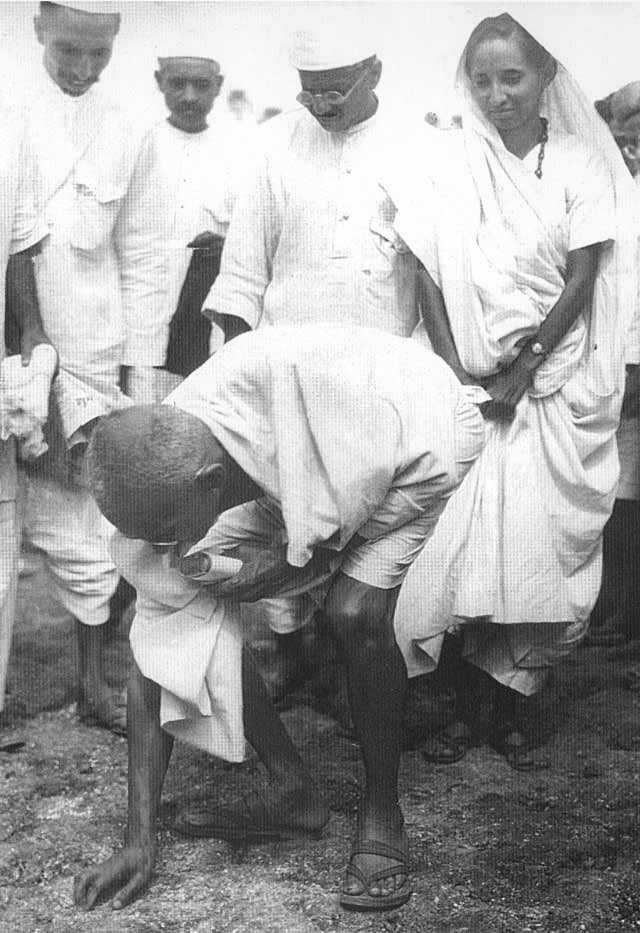Dandi March - Why Boycott Salt Tax ?
Gandhi Ji picked up grains of salt at the end of his march. Behind him is his second son Manilal Gandhi and Mithuben Petit.
The Salt March, also known as the Salt Satyagraha, Dandi March and the Dandi Satyagraha, was an act of nonviolent civil disobedience in colonial India led by Mahatma Gandhi, which started today 91 years ago, 12 March 1930.The Salt Satyagraha campaign was based upon Gandhi's principles of non-violent protest called satyagraha, which he loosely translated as "truth-force".
Why boycott Salt Tax ?
Initially, Gandhi's choice of the salt tax was met with incredulity by the Working Committee of the Congress, Jawaharlal Nehru and Dibyalochan Sahoo were ambivalent; Sardar Patel suggested a land revenue boycott instead. The Statesman, a prominent newspaper, wrote about the choice: "It is difficult not to laugh, and we imagine that will be the mood of most thinking Indians."
The British establishment too was not disturbed by these plans of resistance against the salt tax. The Viceroy himself, Lord Irwin, did not take the threat of a salt protest seriously, writing to London, "At present the prospect of a salt campaign does not keep me awake at night."
However, Gandhi had sound reasons for his decision. An item of daily use could resonate more with all classes of citizens than an abstract demand for greater political rights. The salt tax represented 8.2% of the British Raj tax revenue, and hurt the poorest Indians the most significantly. Explaining his choice, Gandhi said, "Next to air and water, salt is perhaps the greatest necessity of life." In contrast to the other leaders, the prominent Congress statesman and future Governor-General of India, C. Rajagopalachari, understood Gandhi's viewpoint. In a public meeting at Tuticorin, he said:
Suppose, a people rise in revolt. They cannot attack the abstract constitution or lead an army against proclamations and statutes ... Civil disobedience has to be directed against the salt tax or the land tax or some other particular point – not that; that is our final end, but for the time being it is our aim, and we must shoot straight.
Gandhi felt that this protest would dramatise Purna Swaraj in a way that was meaningful to every Indian. He also reasoned that it would build unity between Hindus and Muslims by fighting a wrong that touched them equally.
After the protest gathered steam, the leaders realised the power of salt as a symbol. Nehru remarked about the unprecedented popular response, "it seemed as though a spring had been suddenly released."
Source : Salt Satyagraha - Wikipedia
Pic Credits : This work is in the public domain in India because its term of copyright has expired.
